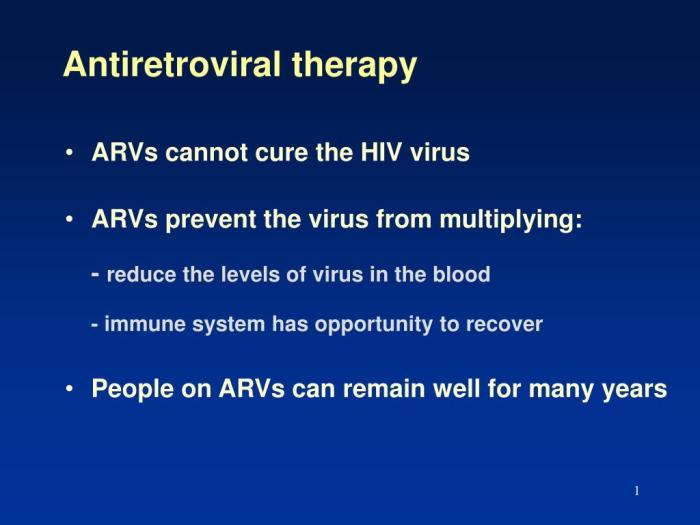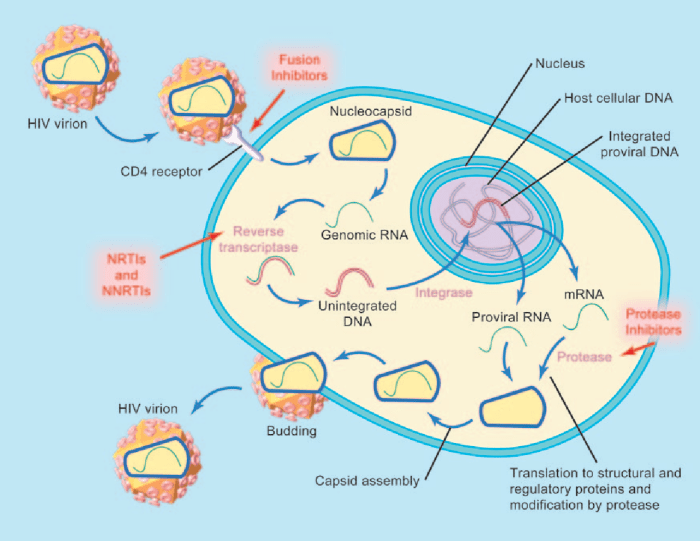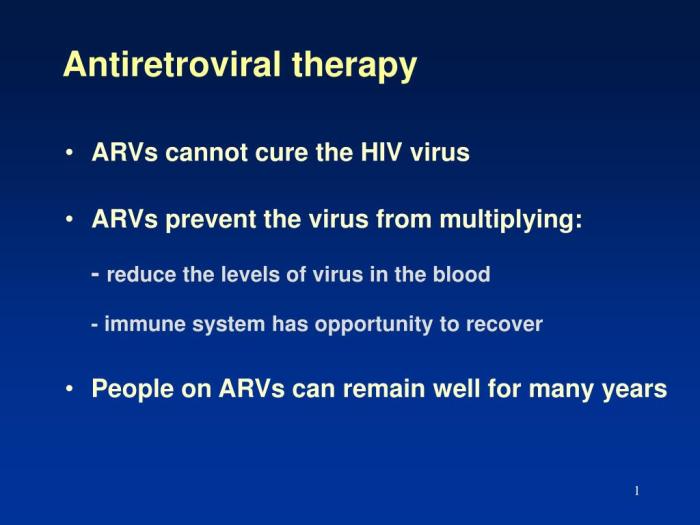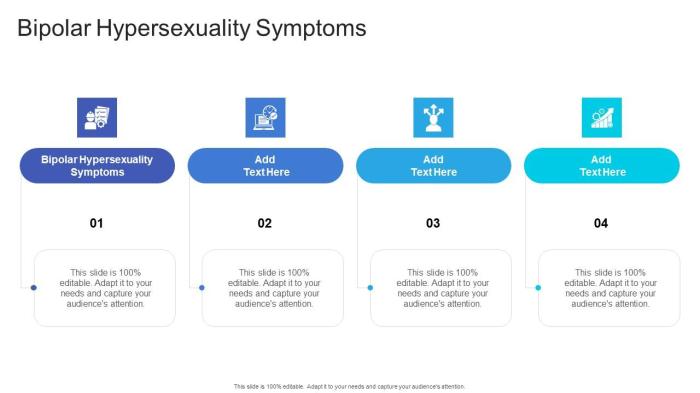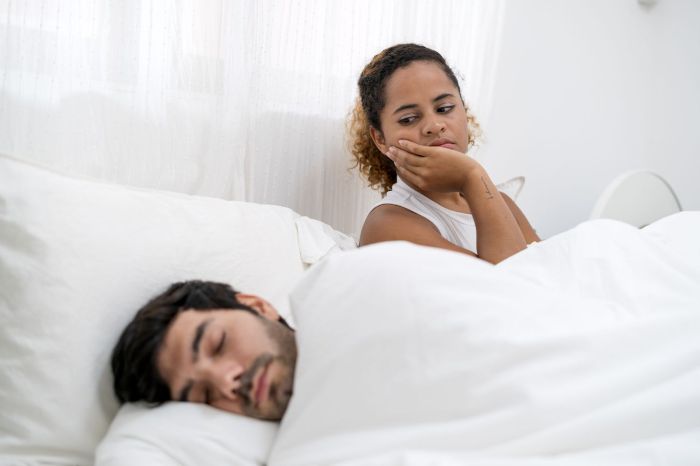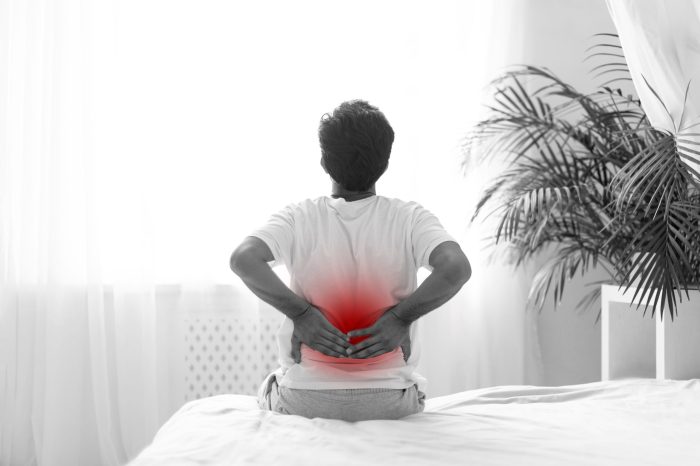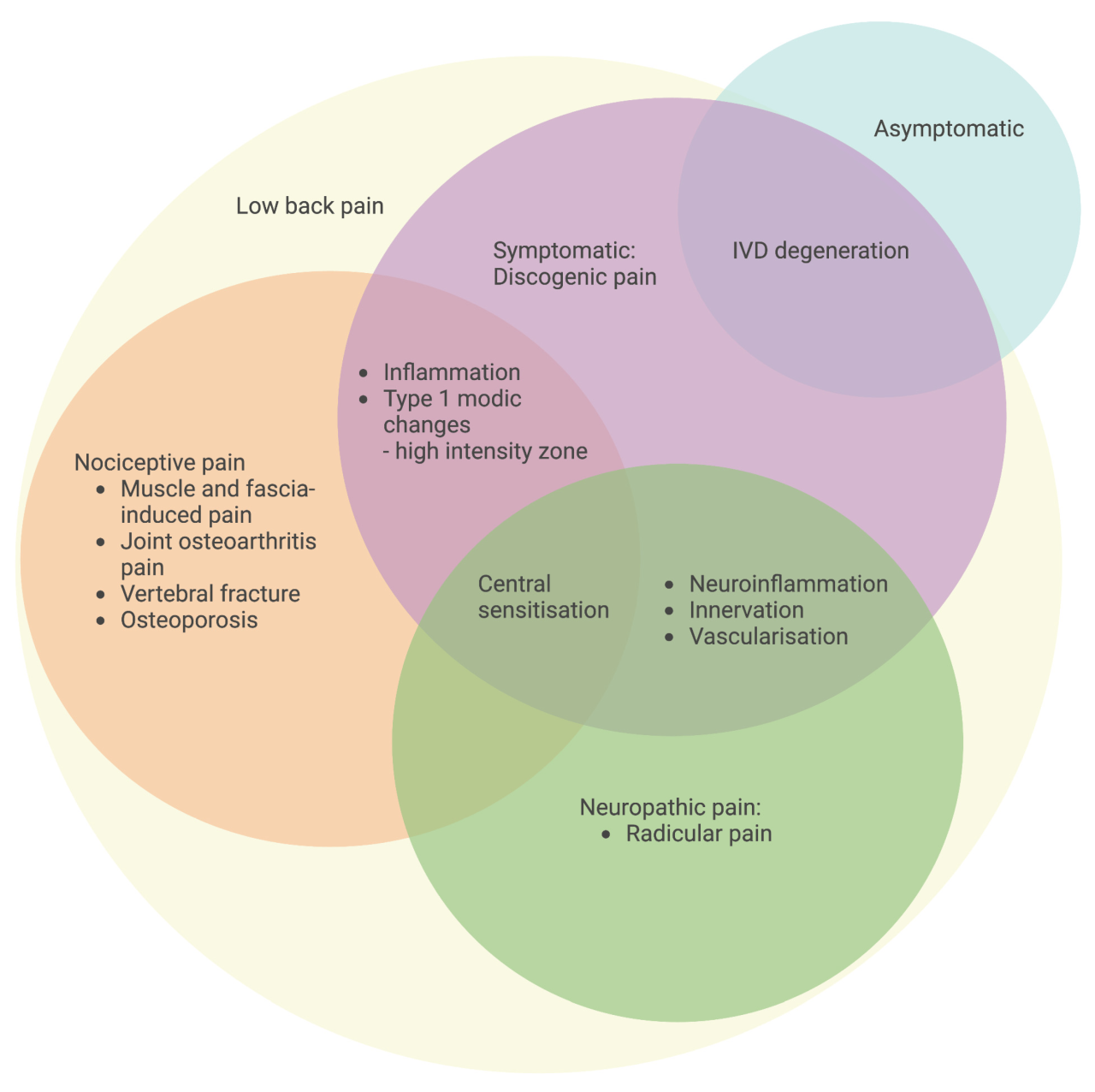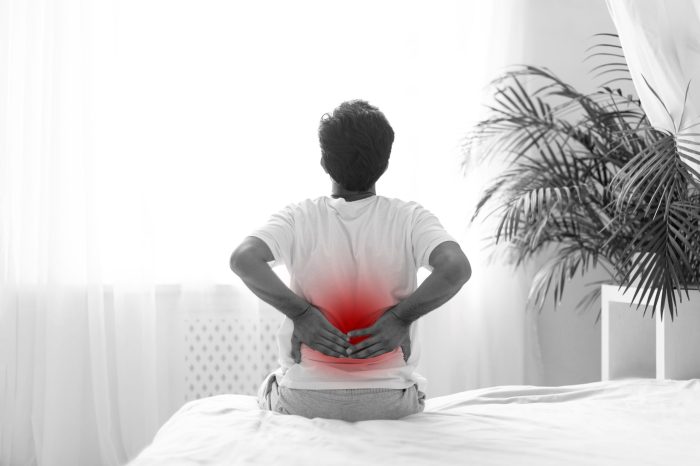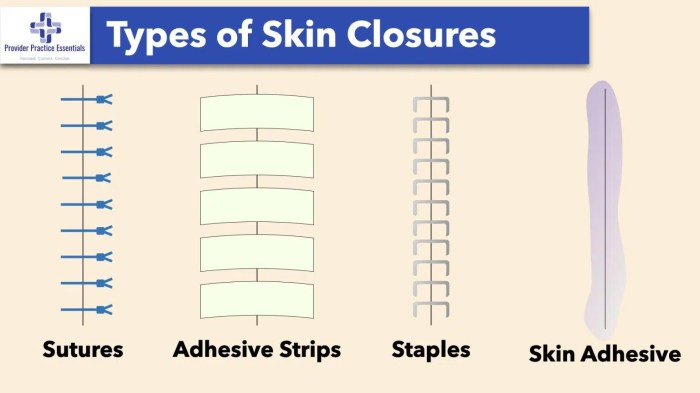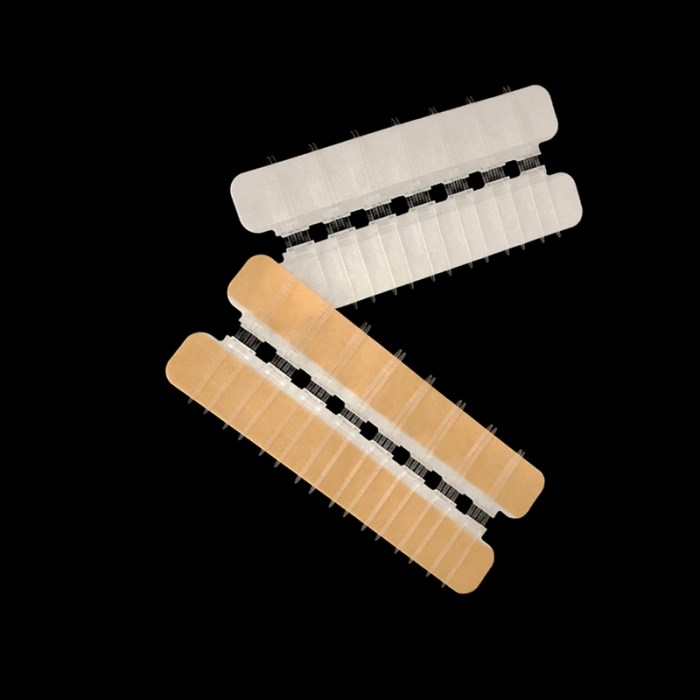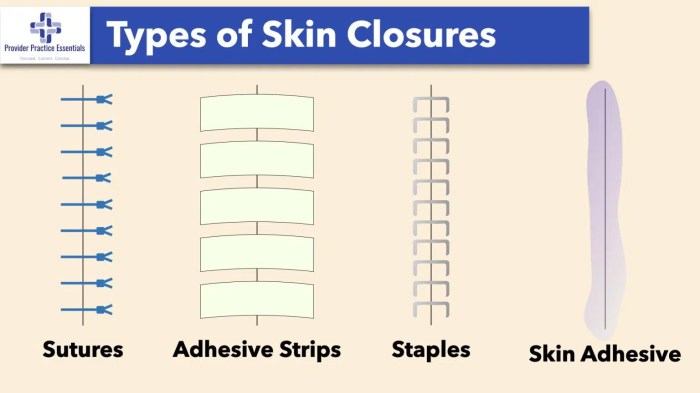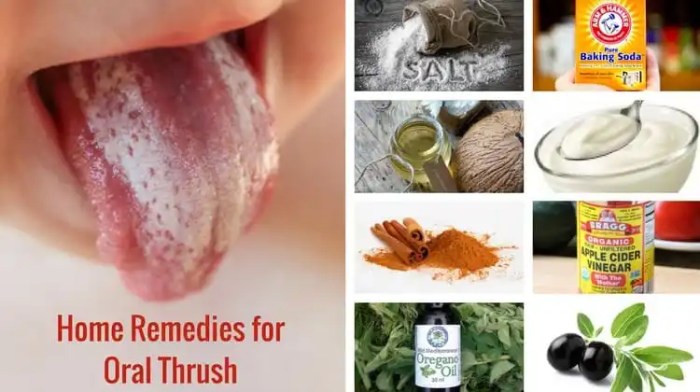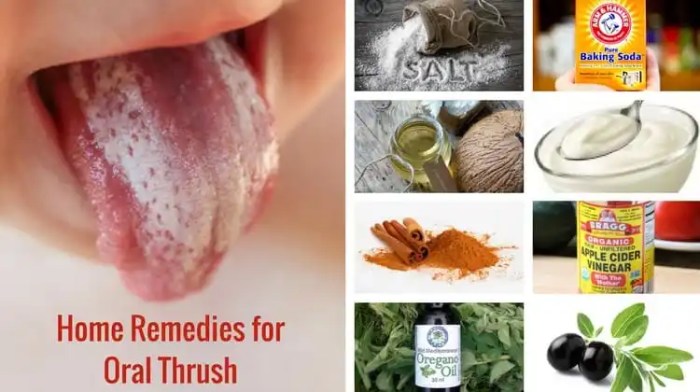Simple steps to increase your life expectancy are within reach. This guide unveils practical strategies to enhance your well-being and potentially extend your lifespan. We’ll explore dietary choices, physical activity, stress management, sleep hygiene, social connections, mindfulness, and preventative healthcare. Each section offers actionable steps you can incorporate into your daily routine.
Discover the surprising power of small changes. By understanding how each aspect contributes to a longer, healthier life, you’ll be empowered to make sustainable choices that truly matter.
Healthy Diet
A healthy diet is the cornerstone of a long and fulfilling life. It’s not about restrictive fads, but rather about cultivating sustainable habits that nourish your body and mind. By focusing on nutrient-rich foods and mindful eating, you can significantly enhance your well-being and increase your life expectancy.
Five Easily Accessible, Nutrient-Rich Foods for Longevity
A balanced diet includes a variety of foods, each contributing unique nutrients. Here are five readily available and highly beneficial foods for a longer, healthier life:
- Leafy Greens (Spinach, Kale, Collard Greens): These vibrant vegetables are packed with vitamins, minerals, and antioxidants. They support cellular health, reduce inflammation, and promote healthy digestion, all crucial factors in longevity.
- Berries (Blueberries, Strawberries, Raspberries): Berries are renowned for their potent antioxidant properties. They protect against cellular damage, improve cardiovascular health, and may even boost cognitive function, contributing to a sharper mind and body throughout life.
- Fatty Fish (Salmon, Tuna, Mackerel): Rich in omega-3 fatty acids, these fish are essential for brain health, heart function, and reducing inflammation. Regular consumption can contribute to a healthier aging process and potentially extend lifespan.
- Legumes (Beans, Lentils, Chickpeas): A fantastic source of protein and fiber, legumes promote satiety, regulate blood sugar levels, and support gut health. They are also a sustainable protein choice for maintaining a healthy weight.
- Nuts and Seeds (Almonds, Walnuts, Chia Seeds): These provide healthy fats, protein, and fiber. They can contribute to heart health, improved cholesterol levels, and sustained energy, playing a vital role in long-term well-being.
Sample Weekly Meal Plan
This meal plan incorporates the five nutrient-rich foods, emphasizing portion control and variety. Remember to adjust portions based on your individual needs and activity levels.
- Monday: Grilled Salmon with roasted broccoli and quinoa. A lean protein source paired with fiber-rich vegetables and whole grains.
- Tuesday: Lentil soup with a side salad. A hearty and nutritious soup with a satisfying dose of protein and fiber.
- Wednesday: Chicken stir-fry with brown rice and mixed greens. A balanced meal with lean protein, whole grains, and vegetables.
- Thursday: Spinach and feta omelet with a side of berries. A protein-packed breakfast that includes leafy greens and antioxidant-rich berries.
- Friday: Tuna salad sandwich on whole-wheat bread with a side of mixed greens and almonds. A light lunch with lean protein, healthy fats, and fiber.
- Saturday: Vegetarian chili with a side of brown rice and a handful of walnuts. A hearty and nutritious meal with fiber, protein, and healthy fats.
- Sunday: Roast chicken with roasted vegetables (carrots, potatoes, and sweet potatoes) and a side of quinoa. A well-rounded meal with lean protein, complex carbohydrates, and a variety of vegetables.
Healthy Eating Patterns vs. Fad Diets
Sustainable healthy eating patterns, like the Mediterranean diet, focus on whole, unprocessed foods and prioritize nutrient density. They emphasize portion control, variety, and mindful eating. In contrast, fad diets often promise quick results but lack scientific backing and can be unsustainable in the long run. These diets can lead to nutrient deficiencies and can negatively impact long-term health.
Healthy eating habits are crucial for overall well-being and longevity.
Simple Tips for Healthy Swaps
Making small changes in your everyday meals can significantly impact your health. Swap processed foods for whole grains, sugary drinks for water, and unhealthy fats for healthy fats. For example, opt for whole-wheat bread instead of white bread, or choose olive oil over butter.
Table: Food Items, Nutritional Benefits, and Simple Preparation
| Food Item | Nutritional Benefits | Simple Preparation Method |
|---|---|---|
| Spinach | Vitamins A, C, K; Minerals like iron and folate; antioxidants | Sautéed with garlic and olive oil, or added to smoothies. |
| Blueberries | Antioxidants, Vitamin C, fiber | Eaten fresh, added to yogurt, or baked into muffins. |
| Salmon | Omega-3 fatty acids, protein, Vitamin D | Baked, grilled, or pan-fried. |
Physical Activity
Staying active is crucial for a longer, healthier life. Beyond a healthy diet, consistent physical activity plays a vital role in maintaining physical and mental well-being, impacting everything from cardiovascular health to cognitive function. Engaging in regular exercise strengthens muscles, improves flexibility, and boosts the immune system, all of which contribute to a longer lifespan. The key is finding activities you enjoy and can incorporate seamlessly into your daily routine.Different forms of exercise are suitable for various age groups and fitness levels.
Finding the right balance is essential for maximizing benefits and minimizing risk. It’s important to start slowly and gradually increase intensity and duration as your fitness improves.
Exercise for Different Age Groups
Children and adolescents benefit greatly from activities that promote growth, coordination, and social interaction. Team sports, such as basketball or soccer, are excellent choices, encouraging teamwork and healthy competition. Swimming, cycling, and other aerobic activities are also beneficial, building cardiovascular fitness and endurance. For adults, maintaining a consistent exercise routine is vital for preserving muscle mass, preventing bone loss, and improving overall health.
Activities like brisk walking, jogging, or swimming can be easily incorporated into a daily routine. Older adults can benefit from low-impact exercises such as water aerobics, chair yoga, or walking. These exercises help maintain flexibility, balance, and muscle strength, preventing falls and improving quality of life.
Simple steps to increase your life expectancy often involve focusing on lifestyle choices. While a healthy diet and regular exercise are crucial, sometimes, unexpected medical interventions can also play a role. For example, understanding procedures like Kirschner wires, which are small metal rods used in certain surgeries what is a Kirschner wire , can provide insights into the broader scope of medical advancements.
Ultimately, staying informed and prioritizing well-being are key elements in optimizing your lifespan.
Sample Weekly Exercise Routine
This routine combines cardio, strength training, and flexibility exercises, adaptable to different fitness levels. It’s crucial to listen to your body and adjust the intensity and duration as needed.
- Monday: Cardio (30 minutes brisk walking or jogging). Strength training (focus on upper body: push-ups, rows, bicep curls). Flexibility (stretching, holding each stretch for 20-30 seconds).
- Tuesday: Rest or light activity.
- Wednesday: Cardio (30 minutes cycling or swimming). Strength training (focus on lower body: squats, lunges, calf raises). Flexibility (yoga or Pilates).
- Thursday: Rest or light activity.
- Friday: Cardio (45 minutes dancing or Zumba). Strength training (full body workout). Flexibility (foam rolling).
- Saturday: Active recovery (hiking, gardening). Flexibility (stretching).
- Sunday: Rest or light activity.
Benefits of Different Types of Physical Activity
Aerobic exercises, like running or swimming, improve cardiovascular health, reducing the risk of heart disease and stroke. Strength training, on the other hand, builds and maintains muscle mass, which is vital for metabolism and bone health. Flexibility exercises enhance range of motion and prevent injuries. Incorporating a mix of these activities offers comprehensive benefits for longevity.
Importance of Consistent Exercise
Consistent exercise is fundamental for maintaining physical health and longevity. Regular physical activity helps regulate blood sugar levels, improving insulin sensitivity. This, in turn, reduces the risk of developing type 2 diabetes, a significant contributor to decreased lifespan.
Integrating Physical Activity into Daily Life
Integrating physical activity into daily life doesn’t require significant time commitments. Taking the stairs instead of the elevator, walking or cycling short distances, or incorporating brief bursts of activity throughout the day can all contribute to overall activity levels. Even a 10-minute walk during your lunch break can significantly improve your health.
Exercise and Longevity Table
| Type of Exercise | Duration | Frequency | Benefits |
|---|---|---|---|
| Brisk Walking | 30 minutes | 5 days/week | Improved cardiovascular health, weight management, stress reduction. |
| Strength Training | 20-30 minutes | 2-3 days/week | Increased muscle mass, improved bone density, enhanced metabolism. |
| Yoga/Pilates | 30-60 minutes | 2-3 days/week | Improved flexibility, balance, stress relief, reduced risk of injury. |
| Swimming | 30 minutes | 3 days/week | Full-body workout, low-impact on joints, excellent cardiovascular exercise. |
Stress Management
Stress is an unavoidable part of modern life, but its impact on our health and longevity is undeniable. Chronic stress can wreak havoc on our physical and mental well-being, leading to a cascade of negative consequences. Understanding the sources of stress and developing effective coping mechanisms is crucial for a longer, healthier life.Managing stress isn’t about eliminating it entirely; it’s about learning to navigate its challenges and find healthy ways to respond.
By understanding how stress affects our bodies and minds, we can equip ourselves with the tools to mitigate its impact and improve our overall well-being, ultimately extending our lifespans.
Stress Triggers in Daily Life
Numerous factors contribute to stress in our daily routines. These range from major life events like job loss or relationship issues to more mundane stressors such as traffic jams or deadlines. Recognizing these triggers is the first step in developing effective stress-reduction strategies. Identifying personal stress triggers is essential for tailored management approaches.
Practical Methods for Reducing Stress
Effective stress reduction relies on a multi-faceted approach, combining various techniques. Here are five practical and accessible methods:
- Mindfulness and Meditation: Regular mindfulness practices, including meditation, help cultivate awareness of the present moment. By focusing on the breath and sensations, individuals can detach from anxious thoughts and worries. This practice can help calm the nervous system and promote emotional regulation. Mindfulness has been shown to lower cortisol levels, a key hormone associated with stress.
- Physical Activity: Exercise is a powerful stress reliever. Physical activity releases endorphins, which have mood-boosting effects. Even moderate-intensity exercise can significantly reduce stress levels. Activities like walking, jogging, swimming, or dancing can effectively combat stress and improve overall health.
- Healthy Diet: Nourishing the body with a balanced diet plays a crucial role in stress management. A diet rich in fruits, vegetables, and whole grains provides essential nutrients for optimal bodily function, including managing stress hormones. Conversely, excessive consumption of processed foods, sugary drinks, and caffeine can exacerbate stress responses.
- Social Support: Connecting with loved ones, friends, or support groups provides emotional support and a sense of belonging. Sharing experiences and receiving encouragement can significantly buffer the negative effects of stress. Strong social connections foster resilience and promote mental well-being.
- Time Management and Organization: Effective time management and organization can minimize feelings of overwhelm and control. Prioritizing tasks, setting realistic goals, and breaking down large projects into smaller, manageable steps can significantly reduce stress associated with feeling overwhelmed.
Impact of Chronic Stress on Health and Lifespan
Chronic stress can significantly impact physical and mental health. It’s linked to a wide range of health problems, including cardiovascular disease, weakened immunity, and digestive issues. Prolonged exposure to stress hormones can disrupt the body’s physiological functions, potentially shortening lifespan. For instance, chronic stress has been linked to increased risk of heart disease, impacting both physical and mental health, and subsequently affecting longevity.
How Stress Affects Physiological Functions
Stress triggers the release of hormones like cortisol, adrenaline, and norepinephrine. These hormones prepare the body for a “fight-or-flight” response. However, prolonged exposure leads to physiological changes that negatively affect various bodily functions. For example, chronic stress can suppress the immune system, increasing vulnerability to illness. Stress management techniques help regulate these hormonal responses, promoting a healthier physiological state.
Mental and Physical Health Connection to Longevity
Mental and physical health are intricately linked. Stress significantly impacts both aspects. Individuals with good mental well-being tend to exhibit healthier lifestyle choices and coping mechanisms, which directly contribute to a longer lifespan. Conversely, chronic stress can lead to unhealthy habits and exacerbate existing health conditions, shortening lifespan.
Stress Management Techniques Table
| Stressor | Stress-Reducing Method |
|---|---|
| Work deadlines | Prioritize tasks, break down projects, time management |
| Relationship conflicts | Open communication, active listening, seeking support |
| Financial worries | Budgeting, seeking financial advice, seeking support groups |
| Traffic congestion | Mindfulness, deep breathing exercises, listening to music |
| Overwhelm | Time management, setting boundaries, delegating tasks |
Sleep Hygiene

Sleep is not just a luxury; it’s a fundamental pillar of health and longevity. Adequate sleep allows our bodies to repair, rejuvenate, and consolidate memories, impacting everything from physical recovery to cognitive function. Ignoring the importance of sleep can lead to a cascade of negative health consequences, impacting our overall well-being and lifespan. Prioritizing sleep hygiene is a crucial step towards a healthier and more fulfilling life.A well-rested individual is more resilient to stress, performs better in daily activities, and exhibits improved emotional regulation.
This translates to a greater capacity for managing daily challenges and building a strong foundation for a long and healthy life. Consistent sleep promotes a healthy metabolism, regulates hormones, and strengthens the immune system, all contributing to a longer and more vibrant lifespan.
Importance of Adequate Sleep
Adequate sleep is essential for optimal physical and mental health. It plays a critical role in cellular repair, hormone regulation, and immune function. Sleep deprivation can negatively impact cognitive function, leading to decreased alertness, impaired memory, and reduced problem-solving abilities. A lack of sufficient sleep can also increase the risk of chronic diseases, including heart disease, stroke, and type 2 diabetes.
Creating a Sleep-Friendly Bedroom, Simple steps to increase your life expectancy
A conducive sleep environment significantly impacts sleep quality. Optimizing your bedroom for sleep involves several key elements. The bedroom should be cool, dark, and quiet. A comfortable mattress and pillows tailored to your individual needs are also important considerations. Consider using blackout curtains, earplugs, or a white noise machine to block out external distractions.
A consistent sleep schedule and a relaxing bedtime routine can also contribute to a better sleep experience. Maintaining a clean and organized bedroom can further enhance feelings of relaxation and calm.
Simple Tips for Improving Sleep Quality
Consistency is key when it comes to sleep. A regular sleep schedule, even on weekends, helps regulate your body’s natural sleep-wake cycle. Establishing a relaxing bedtime routine can signal to your body that it’s time to wind down. This might include taking a warm bath, reading a book, or practicing gentle stretching. Avoid caffeine and alcohol close to bedtime, as these substances can interfere with sleep quality.
Regular exercise can improve sleep, but avoid intense workouts close to bedtime.
Impact of Sleep Deprivation on the Body
Sleep deprivation can have significant consequences on the body. It can impair cognitive function, making it harder to concentrate, learn, and remember. It can also weaken the immune system, increasing susceptibility to illness. Chronic sleep deprivation is linked to an increased risk of developing chronic health conditions, including heart disease, type 2 diabetes, and obesity. A lack of sleep can also affect mood and emotional regulation, leading to irritability, anxiety, and depression.
Comparing Different Sleep Schedules and Their Impact
Different sleep schedules can have varying effects on overall health. A consistent sleep schedule, with regular sleep and wake times, is generally recommended for maintaining optimal health. While occasional variations may be acceptable, long-term inconsistency can disrupt the body’s natural circadian rhythm. Individuals with irregular work schedules or shift work may experience more challenges in maintaining consistent sleep patterns, which can negatively impact their health.
Sleep Habits, Recommended Actions, and Potential Benefits
| Sleep Habit | Recommended Action | Potential Benefit |
|---|---|---|
| Irregular sleep schedule | Establish a consistent sleep schedule, even on weekends, aiming for 7-9 hours of sleep per night. | Improved sleep quality, better mood regulation, and reduced risk of health issues. |
| Using electronics before bed | Avoid using electronic devices (phones, tablets, computers) at least one hour before bedtime. | Reduced exposure to blue light, promoting relaxation, and improving sleep onset. |
| Lack of a relaxing bedtime routine | Develop a relaxing bedtime routine, including activities like reading, taking a warm bath, or listening to calming music. | Reduces stress and anxiety, promoting a sense of calm, and facilitating sleep onset. |
Social Connections: Simple Steps To Increase Your Life Expectancy
Nurturing strong social connections is crucial for a fulfilling and long life. Beyond the emotional benefits, research consistently demonstrates a strong link between social interaction and physical health, including increased longevity. Maintaining a supportive network can buffer against stress, promote resilience, and contribute to overall well-being. Investing in these relationships is an investment in your health and happiness.
The Importance of Social Interaction
Strong social connections are vital for both mental and physical well-being. Studies have shown that individuals with robust social networks tend to experience lower levels of stress, improved immune function, and a reduced risk of chronic diseases. Social interaction provides opportunities for emotional support, shared experiences, and a sense of belonging, all of which contribute to a higher quality of life.
Taking simple steps like eating a balanced diet and staying active can significantly boost your life expectancy. However, post-operative care, like managing potential complications such as blood clots during and after surgery, blood clots during and after surgery , is crucial for long-term health. Following these procedures and focusing on overall wellness can help you live a healthier, longer life.
This sense of community fosters resilience and helps navigate life’s challenges more effectively.
Building and Maintaining Strong Social Connections
Social connections are not static; they require effort and nurturing. Engaging in activities you enjoy with others, whether it’s a book club, a sports team, or simply spending time with friends and family, is key to fostering meaningful relationships. Regular communication, both in person and through technology, is important. Scheduling time for social interactions and actively listening to others are crucial components of maintaining strong bonds.
Making an effort to connect with people from diverse backgrounds and interests can broaden your perspectives and enrich your life.
Positive Impact of Social Support Networks on Longevity
Social support networks play a vital role in promoting longevity. A strong support system provides a sense of belonging, emotional stability, and practical assistance during challenging times. This network of individuals can offer encouragement, guidance, and practical help, leading to improved mental and physical well-being. This support can manifest in practical ways, like help with errands, or emotional support during difficult periods.
Simple Strategies for Building and Maintaining Meaningful Relationships
Cultivating meaningful relationships requires intentionality and effort. Active listening, showing genuine interest in others, and expressing appreciation are fundamental strategies. Making time for regular interaction, whether it’s a weekly dinner with friends or a monthly get-together, strengthens bonds. Being open to new experiences and making an effort to connect with others in different settings are crucial. For example, joining a local club or volunteering can create opportunities to meet new people and build connections.
Social Isolation and its Impact on Health and Lifespan
Social isolation has a profound negative impact on health and lifespan. Loneliness and isolation are associated with increased risks of various health problems, including heart disease, cognitive decline, and weakened immune function. Lack of social interaction can lead to feelings of isolation, depression, and anxiety, which negatively affect overall well-being. Studies have shown that social isolation can significantly shorten lifespan, highlighting the importance of nurturing social connections.
Strategies for Nurturing Social Connections
| Type of Interaction | Frequency | Benefits | Potential Challenges |
|---|---|---|---|
| Regular family dinners | Weekly | Strengthen family bonds, shared experiences, emotional support | Scheduling conflicts, differing opinions |
| Joining a book club | Monthly | Intellectual stimulation, shared interests, new perspectives | Finding a club with compatible interests, time commitment |
| Volunteering at a local organization | Bi-weekly | Sense of purpose, community involvement, meeting new people | Finding a suitable organization, managing time |
| Regular coffee dates with friends | Bi-weekly | Emotional support, shared experiences, maintaining friendships | Finding time for meet-ups, managing scheduling conflicts |
Mindfulness and Mental Well-being

Mindfulness practices, at their core, involve paying attention to the present moment without judgment. This simple act can have a profound impact on our mental well-being, fostering greater self-awareness and resilience. By focusing on the here and now, we can detach from anxieties about the future and regrets about the past, creating a more balanced and peaceful state of mind.Mindfulness isn’t about escaping reality; it’s about engaging with it more fully.
By observing our thoughts, feelings, and sensations without getting carried away by them, we gain a greater understanding of our inner landscape and how to navigate its complexities. This heightened self-awareness can be a powerful tool in stress reduction and emotional regulation, ultimately leading to a healthier and more fulfilling life.
Mindfulness Practices
Mindfulness practices encompass a wide range of techniques, each designed to cultivate present-moment awareness. These techniques aim to anchor the mind in the present, allowing us to observe our thoughts and feelings without getting swept away by them. This observation, without judgment, fosters a sense of calm and clarity.
Benefits of Mindfulness for Stress Reduction and Mental Clarity
Mindfulness practices have been shown to significantly reduce stress levels. By training the mind to focus on the present, we lessen the grip of stress-inducing thoughts and worries about the future. This focused attention also enhances mental clarity, improving concentration and cognitive function. Research consistently demonstrates a correlation between regular mindfulness practice and improved emotional regulation.
Incorporating Mindfulness into Daily Life
Implementing mindfulness into daily routines is easier than you might think. Simple practices like mindful breathing, body scans, and mindful eating can be integrated into everyday activities. Mindful breathing involves focusing on the sensation of each breath entering and leaving the body. Body scans involve systematically bringing awareness to different parts of the body, noticing sensations without judgment.
Mindful eating involves paying attention to the flavors, textures, and aromas of food, savoring each bite. By incorporating these practices into your daily routine, you can experience a greater sense of calm and clarity in your daily life.
The Impact of Positive Thinking on Lifespan
Positive thinking, often intertwined with mindfulness, plays a significant role in overall well-being and potentially lifespan. Cultivating optimism and gratitude can foster resilience in the face of challenges, leading to better coping mechanisms and stress management. A positive mindset can also influence physical health, as studies have linked positive emotions to stronger immune systems and reduced risk of chronic diseases.
Comparison of Mindfulness Techniques and Their Effectiveness
Different mindfulness techniques offer varying approaches to cultivating present-moment awareness. Mindful walking, for example, involves paying attention to the physical sensations of walking, the rhythm of each step, and the environment around you. Mindful listening involves fully engaging in a conversation, actively paying attention to the speaker’s words and non-verbal cues. Different techniques may resonate with different individuals, and the effectiveness can depend on individual practice and commitment.
A key factor is consistency and intention.
Want to boost your lifespan? Simple steps like a balanced diet and regular exercise are key, but did you know that certain supplements might play a role? For example, understanding the differences between magnesium supplements like magnesium L-threonate and magnesium citrate is important. Choosing the right supplement can significantly impact your health and well-being, which ultimately impacts your overall longevity.
Knowing more about magnesium l threonate vs magnesium citrate could be part of a broader strategy to support healthy aging. Ultimately, prioritizing your health through these simple choices is a fantastic step towards a longer and healthier life.
Mindfulness Techniques and Their Benefits
| Mindfulness Technique | Benefits |
|---|---|
| Mindful Breathing | Reduces stress, increases focus, promotes relaxation. |
| Body Scan Meditation | Improves body awareness, reduces physical tension, fosters relaxation. |
| Mindful Walking | Enhances present moment awareness, reduces stress, improves mood. |
| Mindful Eating | Increases awareness of hunger and fullness cues, promotes mindful consumption, enhances digestion. |
| Mindful Listening | Improves communication, enhances empathy, fosters deeper understanding. |
Preventive Healthcare
Taking proactive steps towards maintaining good health is crucial for longevity and a higher quality of life. Preventive healthcare focuses on identifying and addressing potential health risks before they develop into serious conditions. This approach emphasizes early detection, which significantly improves the chances of successful treatment and positive health outcomes.Regular check-ups and screenings are essential components of a preventive healthcare strategy.
By identifying potential problems early, individuals can take timely action to prevent or manage health issues effectively. Early intervention often leads to more favorable treatment responses and improved overall health.
Recommended Health Screenings
Understanding the recommended health screenings for your age and risk factors is vital. Regular screenings can detect potential health problems early, allowing for prompt intervention and better management. This proactive approach can significantly improve health outcomes and quality of life.
- Blood pressure checks: Monitoring blood pressure regularly helps in identifying hypertension (high blood pressure) early. High blood pressure, if left unchecked, can contribute to heart disease and stroke. Regular checks allow for prompt lifestyle adjustments and medication if necessary.
- Cholesterol screening: Elevated cholesterol levels can lead to cardiovascular diseases. Regular cholesterol screenings help in identifying potential risks and enabling timely interventions. Dietary changes and medication may be necessary to manage cholesterol levels.
- Cancer screenings (e.g., mammograms, colonoscopies): Certain cancers, if detected early, have a higher chance of successful treatment. Screenings like mammograms for breast cancer and colonoscopies for colon cancer are vital for early detection and improved outcomes. Following recommended screening guidelines based on age and risk factors is crucial.
- Diabetes screening: Regular checks for blood sugar levels can identify pre-diabetes or type 2 diabetes. Early diagnosis allows for lifestyle changes and medication to manage the condition and prevent complications.
- Mental health assessments: Mental well-being is just as crucial as physical health. Regular assessments and screenings can help in identifying potential mental health concerns early. Early intervention allows for effective treatment and support systems.
Importance of Regular Check-ups and Health Assessments
Regular check-ups with your primary care physician are essential for maintaining overall health. These appointments provide a platform for discussing health concerns, reviewing medical history, and addressing any potential issues. Physicians can offer tailored recommendations based on individual needs and risk factors.
Regular health assessments allow for the monitoring of vital signs, identifying trends, and making necessary lifestyle adjustments. These assessments help in identifying potential issues before they become serious health concerns.
The Link Between Early Detection and Improved Health Outcomes
Early detection of health problems significantly improves the chances of successful treatment. Early intervention often leads to more favorable outcomes and reduced risk of complications. The effectiveness of treatment often depends on the stage of the disease. Catching problems early allows for more effective and less aggressive interventions.
Simple Steps for Maintaining a Healthy Lifestyle
Adopting healthy habits is key to reducing the risk of diseases. Maintaining a balanced diet, engaging in regular physical activity, and managing stress levels are essential elements of a healthy lifestyle.
- Balanced diet: A balanced diet rich in fruits, vegetables, whole grains, and lean proteins provides the necessary nutrients for optimal health. Limiting processed foods, sugary drinks, and excessive saturated fats is also crucial.
- Regular physical activity: Engaging in regular physical activity helps maintain a healthy weight, improves cardiovascular health, and strengthens the immune system. Aim for at least 150 minutes of moderate-intensity or 75 minutes of vigorous-intensity aerobic activity per week.
- Stress management techniques: Practicing stress management techniques, such as meditation or deep breathing exercises, can significantly reduce the risk of chronic stress-related health problems. Identifying and addressing stressors is crucial for maintaining well-being.
Health Screening Recommendations
Regular health screenings are crucial for early detection of potential health problems. Following recommended frequencies is essential for proactive health management.
| Health Screening | Recommended Frequency |
|---|---|
| Blood pressure | Annually, or more frequently if advised by a doctor |
| Cholesterol | Every 4-6 years, or more frequently if advised by a doctor |
| Cancer screenings (e.g., mammograms, colonoscopies) | Based on age and risk factors, as recommended by a doctor |
| Diabetes screening | Annually, or more frequently if advised by a doctor |
| Mental health assessment | Annually, or more frequently if needed |
Final Wrap-Up
In conclusion, achieving a longer and healthier life is a journey, not a destination. Implementing the simple steps Artikeld here, from nourishing your body with wholesome foods to prioritizing stress reduction and social connection, can yield remarkable results. Embrace the potential for a more vibrant and fulfilling life by making these positive lifestyle choices a part of your everyday routine.




